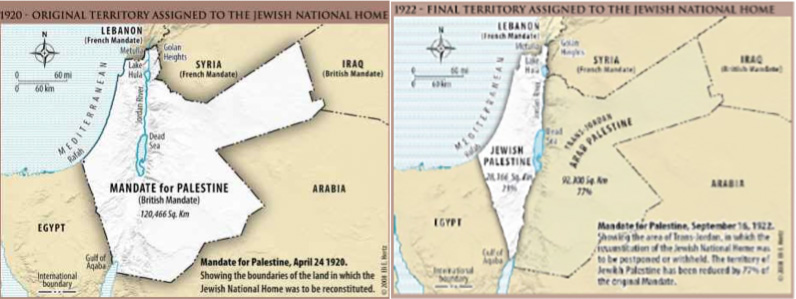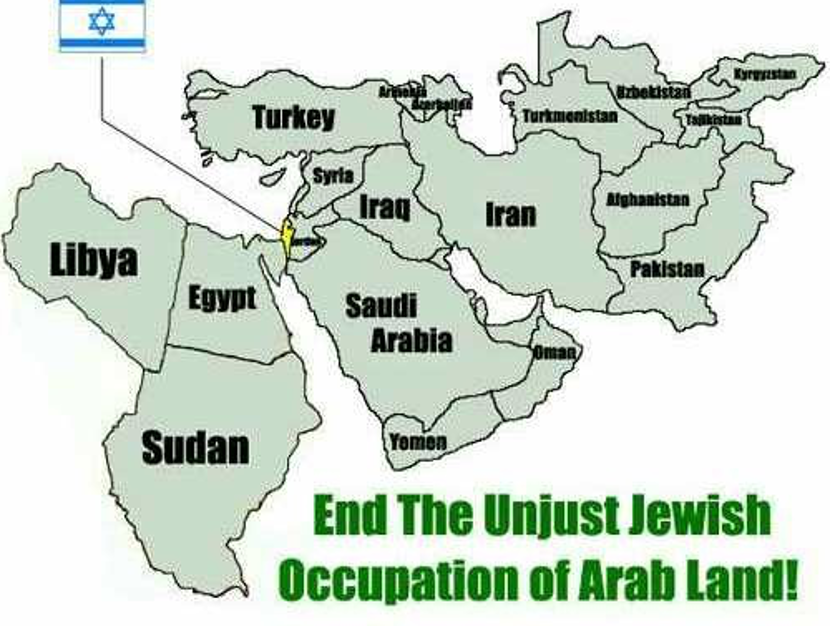
US Ambassador David Friedman
The settlements in the West Bank
Excerpt from a speech (January 2020) in which US Ambassador David Friedman discusses the one issue that is still on the table — the settlements in the West Bank.

By Rodney Mazinter

The arguments and counter-arguments that have been bandied about are not to most Jews a debate or an intellectual exchange of ideas, but rather a matter of life and death. And not just for Jews. Western culture and all its religions are under attack and at risk from an intolerant, extremist entity bent on domination.
I hope by this historical summary to make clear Israel's right to be exactly where it is and conduct itself as it does. Live and let live by all means —tolerance is the civilized watchword — what is not acceptable is that current bombastic rhetoric continues to couch its distortions in a cloak of apparently reasonable argument, always conveniently leaving out Israel's very strong legal and moral case.
Historical and legal precedent, and not wishful thinking and invented “facts” are the sole determinants that should be exercising the minds of commentators who act on the false premise that Israel falls foul of international law by “occupying Palestinian land”.
In this regard those interested in Middle East affairs are referred to the 720-page seminal work by Howard Grief, The Legal Foundation and Borders of Israel Under International Law’ published in 2008 after ten exhaustive years of research.
Israel draws its legitimacy from a number of chronological events dating back to 1915 immediately preceding and following World Wars I and ll, and set against the backdrop of increased anti-Semitic events in Europe that began with the Dreyfus affair of 1894 and culminating in the Holocaust.
During the 1914-18 World War, when it became clear that Turkey had chosen the wrong side and was about to lose its 600-year old Ottoman Empire of North Africa, the Middle East, and Europe, the victorious allies, notably Great Britain, France and Russia met to divide the spoils.
In 1915 Sir Henry McMahon had met with Sharif Hussein of Mecca. Hussein ibn Ali al-Hashimi was a Hashemite Arab leader who was the Sharif and Emir of Mecca from 1908 and then, after proclaiming the Arab Revolt against the Ottoman Empire, he became King of the Hejaz from 1916 to 1924. McMahon and Hussein came to an accommodation that would divide areas of influence in the Middle East and include into each those areas that were historically relevant to the fractious and warring Arab people wherever there was a majority of one over the other, a ruling entity, but always excluding greater Palestine.
Within months of this meeting of understanding, and consequent to it, an informal meeting took place in May 1916 known as the Sykes-Picot Agreement in which Britain, France and Russia sought to divide the entire Middle East into areas of influence while the Holy Lands would be administered by the three powers jointly.
The much-quoted Balfour Declaration came the following year in 1917 when Britain gave firm undertakings in support of establishing a homeland for Jews in Palestine.
However, it is the San Remo Conference in Italy of April 1920 that is, in fact, the key date determining the history of Palestine, Syria, Lebanon and Iraq. During that year the Treaty of Sevres obliged Turkey to renounce all rights to its territories over Asia and North Africa. The future status of these territories was determined at San Remo.
Included in the San Remo resolution was the charge to Britain to implement the Balfour Declaration. This charge has never been abrogated and remains in effect to this day.
What is of vital importance is that this declaration was accepted by the League of Nations on 24th July, 1922 and adopted as a legal document by the United Nations after World War II, that not only gave Great Britain administrative control of Palestine but established the reality of a Jewish national home. It pre-dated by 27 years UN Resolution 181 of November 1947 which established the Jewish State by partition.
This is a binding international agreement. By virtue of the same San Remo Resolution, the legitimacy of Syria, Lebanon and Iraq was also established and most recently commemorated in April 2010 in a ceremony held at San Remo. The closing statement read: “…the San Remo Resolution of 1920, which included the Balfour Declaration in its entirety…remains irrevocable, legally binding and valid to this day. …The rights it conferred upon the Jewish people have been unlawfully dismissed. …A just and lasting peace…can only be achieved by recognising the long-established rights of the Jewish people under international law.”
Having established the progression of treaties, understandings, conferences, resolutions and commitments that lead to the granting of the Mandate over Palestine, it was Britain that chose to execute one of the most despicable political sleights of hand in contemporary history that was destined to bring forth disaster to the Jewish people on an unimaginable scale and contribute immeasurably to the enormity of the Holocaust.
Keeping in mind that the steps as outlined above were taken to satisfy the demand for a Jewish National Home in Palestine, it must also be borne in mind that Palestine was NOT created to satisfy Arab aspirations in this region, whether east or west of the Jordan River. Arab aspirations were catered for at San Remo in the adjoining territories of Mesopotamia and Syria, in addition to the existing state of Hedjaz in the Arabian Peninsula. Hence the step which followed merely months later, was not only surprising but in direct conflict with everything that had thus far been achieved. Further, it ignored the very legalities that had been adopted by The League of Nations and transferred, via the Mandate, to Great Britain.
In September 1922, Britain took the unilateral step of partitioning Palestine, transferring 78% of the territory originally designated for the Jewish National Home to the formation of a new country it designated, east of the River Jordan. To its ignominy Britain, using its position of dominance and the weakness of the Jewish voice, further divided the land allocated by the League of Nations to a Jewish home giving the lion’s share to the new country that it called Tansjordan, that became the Hashemite kingdom of today.
The truncated territory west of the river now became “Palestine” in accordance with the McMahon Correspondence of 1915. (See above) Transjordan was no longer a part of the intended Jewish National Home as described in the Balfour Declaration, the San Remo Resolution and the British Mandate.
The only beneficiary in that region of the San Remo Resolution was Transjordan to which Britain granted autonomy. Syria, Iraq and Lebanon also came into being as a direct result of San Remo via a resolution that has never been abrogated and remains legally binding to this day. Were that not the case, the legality today of Jordan, Syria Iraq and Lebanon would be null and void.
The recommendations of the Peel Commission of 1937 and the United Nations partition plan of 1947, although not entirely the outcome originally proposed, were accepted as a lesser goal by an anxious Israel — a weak country in waiting — of acquiring a smaller portion of the proposed further division of what was left in the British protectorate of Palestine.
In an attempt to head off a calamity, before and after the war, Israel immediately made known its peaceful intentions. Its overtures were totally rebuffed by all the surrounding Arab nations. Its arrival as a sovereign state was almost stillborn when every Arab country and entity in the area categorically rejected this even further partition and launched an illegal war of annihilation.
As the British began to dismantle their Mandate and leave western Palestine, Israel's War of Independence began (November 30, 1947‑ May 14, 1948) when the incipient nation was attacked by five Arab armies with the stated intent of destroying Israel and “driving the Jews into the sea”.
During the war Palestinian Arabs became belligerents in the conflict, and by its end, rather than accept a Jewish state after five-and-a-half months of warfare, Palestinian Arabs called upon their brethren from seven surrounding countries to invade and crush the nascent Jewish state. Six thousand Jews — 1 percent of Israel's Jewish population — lost their lives during the War of Independence. The destruction of the new country and its people became a real threat.
The Arab League's April 10, 1948, decision to invade Israel and "save Palestine," marked a watershed event, for it changed the rules of the conflict. Accordingly, Israel bears no moral responsibility for the resulting war that was waged and out of military necessity in strategic areas resorted to deliberately banishing Palestinian Arabs in order t "consolidate defense arrangements". With the pending invasion following Israel's declaration of independence, it is no exaggeration to say that the new Jewish state's very survival hung in the balance.
Dislodging Arab inhabitants from sensitive areas in proximity to Jewish settlements, establishing territorial continuity between blocs under Jewish control, and ensuring control of key transportation arteries were military necessities. As May 14th approached, Israel could not afford to risk a Fifth Column at its rear to add to all other aspects of its militarily inferior situation.
The upshot of defeat was hammered home by a stream of dire warnings from Arab capitals, with perhaps the most chilling coming from Jamal Al-Husayni as vice-chairman of the Arab Higher Committee [AHC], who publicly declared:
"The Arabs have taken into their own hands, the Final Solution of the Jewish problem. The problem will be solved only in blood and fire. The Jews will be driven out."
Three years after world Jewry had lost a third of its people in the Holocaust, Israelis were not about to test whether Al-Husayni's words were merely rhetoric or a real threat, and so they prepared for the worst. The cost to Israel to halt the Arab onslaught and gain the upper hand was horrendous. During the first four weeks following the Arab invasion, 1,600 Israelis were killed - a quarter of all the war's casualties.
The claim that Palestinian Arabs were innocent bystanders ignores the facts: The sides in the conflict were not two rival empires, outsiders, or rival caliphs. It was a conflict between two national or ethnic groups. Palestinian Arabs represented one side in the conflict — the side responsible for starting the war.
By their own behavior, Palestinians assumed the role of belligerents in the conflict, invalidating any claim to be hapless victims. Explains scholar Benny Morris: "One of the characteristics of the Palestinian national movement has been the Palestinians' view of themselves as perpetual victims of others: Ottoman Turks, British officials, Zionists, Americans. Palestinian Arabs fail to recognise that they are victims of their own doing.”
Israel prevailed and, showing a magnanimity not usually expected from a country victorious in battle, immediately agreed to comply with Security Council Resolution 242, which for the first time in history ordered a nation to return territories lawfully captured in a defensive war. 242 made it conditional on the defeated countries that as a part of an overall peace agreement it was required of them to recognise Israel's right to "live in security." Abba Eban at the time commented that this "was the first war in history which ended with the victors suing for peace and the vanquished calling for (Israel's) unconditional surrender."
From its inception Israel was prepared to "exchange land for peace." Israel has in fact implemented its obligations under Resolution 242, and more, by eventually returning all captured territory in the Sinai to Egypt when that country signed a peace treaty. It also returned land claimed by Jordan as part of the peace agreement with the Hashemite Kingdom. Finally, it offered to turn over to the PA nearly all of the remaining territory (the West Bank), captured from Jordan's nineteen-year, totally illegal occupation, in exchange for peace, but the Palestinians rejected this offer made at Camp David and Taba as recently as 2000, and instead resorted to increased terrorism. But for this one blemish there could have today been peace and two thriving states living side by side.
In defiance of the UN, the Palestinians rejected the principles of 242 in 1967 after the “Six-day war” and at a summit in Khartoum the attending Arab states issued their notorious three no's: "No peace with Israel, no negotiations with Israel, no recognition of Israel." The Palestinians adopted their uncompromising National Charter, which expressly denied Israel's right to exist, and rejected "all solutions which are substitutes for the total liberation of Palestine", meaning the disappearance of Israel.
An important question posed by Howard Grief was whether, following June 1967, Jewish legal rights and title of sovereignty held by Israel to all of Palestine continued intact even after May 15, 1948, or whether they had lapsed during the 19 year period of foreign rule?
An immediate answer was provided by the 1949 armistice agreements that preserved those rights intact as both Jordan and Egypt, which acquired different areas of the Jewish National Home in the 1948 War of Independence, did not thereby gain any valid title of sovereignty over those areas that they occupied by military aggression. In viewing the value of the Armistice agreement and, by extension, the “Green Line”, it must be understood that the Armistice Agreement made with Jordan in 1948 ceased to exist after Jordan attacked Israel in alliance with Egypt and Syria. This aggressive act constituted a serious violation of the armistice, thereby justifying the right of Israel to denounce it in accordance with Article 40 of the Hague Regulations. With the elimination of the Armistice agreement the applicability of the “Green Line” as a “border” was understandably nullified.
CONCLUSION:
Having journeyed through the sequence of steps that lead to the acceptance of a National Jewish Home, we can now appreciate the following:
When the UN partitioned Palestine in 1947 and created both Israel and what became known as the West Bank, the latter was not accepted by the Arabs as a Palestinian homeland. Following the War of Independence in 1948 this territory was illegally “annexed” by Jordan in a move that was only partially recognised by Britain and wholly by Pakistan. The area that is regarded by Israel as Judea and Samaria (Jerusalem and the West Bank) has remained, in effect, part of the Jewish National Home created at San Remo. As Britain failed to carry out its mandate in preserving this territory as part of a Jewish homeland it has remained in dispute until conquered by Israel in 1967. This provided Israel with the opportunity to annex the West Bank that it has balked from doing for a variety of reasons.
When Israel entered the West Bank and Jerusalem in 1967, it did not occupy territory to which any other party had title, but, in effect, recovered territory to which she was legally entitled. To quote Judge Schwebel, a former President of the International Court of Justice, “As between Israel, acting defensively in 1948 and 1967 on the one hand, and her Arab neighbours, acting aggressively in 1948 and 1967 on the other, Israel has the better title in territory of what was Palestine, including the whole of Jerusalem.”
THE “GREEN LINE”:
When discussing the designation of “Green Line” it is essential to keep its legal status in mind:
Besides the obvious implication of the above definition, it is not possible for Israel to be in breach of international law regarding the placement of the security barrier. The facts clearly show that she is entitled to be, and operate within, a region to which she was granted legal title — title that has never been revoked. Negatively, it has been Israel’s failure to resolve the status of the West Bank by either annexing or vacating it that has evoked such confusion resulting in her being labeled as an “occupier” in the eyes of not only most of the world’s powers but also by many of her own citizens. The resultant application of military instead of civilian law in the West Bank has added further fuel to this negative perception.
The legality of Israel’s valid claim to Judea and Samaria has become lost with the passing of time due to unforgivable ignorance coupled with an indifference to the indisputable existence of title to this region as part of the Jewish National Home, enshrined within the San Remo Resolution.
These are the facts.
Howard Grief: “The Legal Foundation and Borders of Israel under International Law”
Maurice Ostroff: “The San Remo Conference in Context”
www.2nd-thoughts.org/id350.html
Victor Gordon: “An overview of Israel’s legal claim to Judea and Samaria.”

US Ambassador David Friedman
Excerpt from a speech (January 2020) in which US Ambassador David Friedman discusses the one issue that is still on the table — the settlements in the West Bank.

Rabbi Leibel Reznick
The Arab onslaught to erase the Jewish people's historical connection with the Temple Mount.

Rodney Mazinter
A dossier of authenticated historical reports that gives a coherent picture of Israel’s honest efforts to find that peace only to be stymied at every turn by an Arab programme filled with lies and subterfuge, and propaganda.